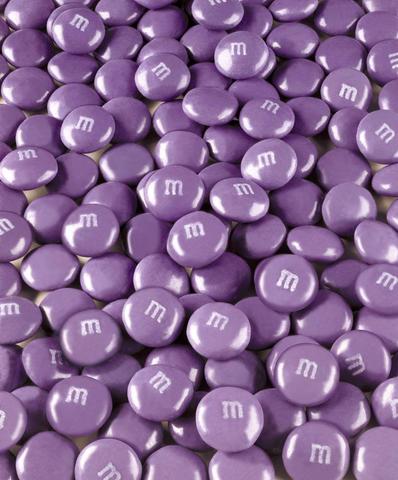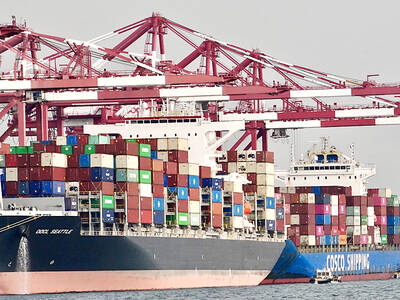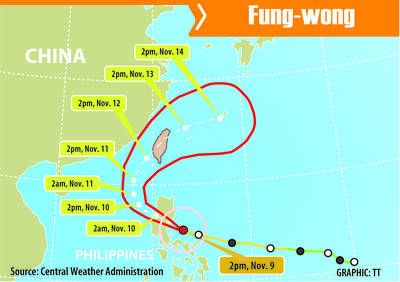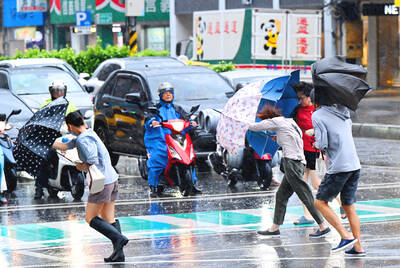How sweet it is.
More than 10 million M&Ms brand candy lovers in the US and 200 other countries have voted to add purple to the popular, button-like candy's rainbow of colors, manufacturer Masterfoods USA, a subsidiary of Mars, Inc, announced on Wednesday at a gala web-cast party in New York.

PHOTO: AP
"We're very excited about the turnout and consumer involvement with M&Ms," Masterfoods USA president Paul Michaels said. Purple won, Michaels said, because "It's a popular color, it's a royal color. People love it around the world."
The new color garnered 41 percent of the vote, beating out aqua's 37 percent and pink's 19 percent. It will appear in the product's crinkly brown bags in August, adding to blue, red, yellow, orange, brown and green.
Specially marked packages containing the three choices were available prior to May 31 when "the polls" closed for the company-sponsored Global Color Vote, the second such promotion and first to include votes from outside the US including Indonesia, Australia, Paris and China.
The candy's original six colors were brown, yellow, orange, red, green and violet, ousted in 1949 in favor of tan, in turn replaced in 1995 by US voters' choice of blue.
Mars Inc founder Forrest Mars Sr. created the candy in the late 1930s based on Spanish Civil War soldiers' hard sugar-encased chocolates. First marketed in 1941, M&Ms'similar ability to resist melting made it a staple food of World War II American GI's.
The candy, whose letters stand for Mars and co-founder Murrie, still boasts its 1954 slogan, "The milk chocolate that melts in your mouth, not in your hand."
In the heated, US$13 billion a year US chocolate market, M&Ms has to have a hard shell. It is the world's top single brand, according to Michaels, but faces fierce competition in America from Hershey's variety of chocolate products including Hershey bars and Reeses peanut butter cups, making Hershey's the top US confectionery brand, according to the Chocolate Manufacturers Association.

The Central Weather Administration (CWA) yesterday said it expected to issue a sea warning for Typhoon Fung-Wong tomorrow, which it said would possibly make landfall near central Taiwan. As of 2am yesterday, Fung-Wong was about 1,760km southeast of Oluanpi (鵝鑾鼻), Taiwan’s southernmost point, moving west-northwest at 26kph. It is forecast to reach Luzon in the northern Philippines by tomorrow, the CWA said. After entering the South China Sea, Typhoon Fung-Wong is likely to turn northward toward Taiwan, CWA forecaster Chang Chun-yao (張峻堯) said, adding that it would likely make landfall near central Taiwan. The CWA expects to issue a land

Taiwan’s exports soared to an all-time high of US$61.8 billion last month, surging 49.7 percent from a year earlier, as the global frenzy for artificial intelligence (AI) applications and new consumer electronics powered shipments of high-tech goods, the Ministry of Finance said yesterday. It was the first time exports had exceeded the US$60 billion mark, fueled by the global boom in AI development that has significantly boosted Taiwanese companies across the international supply chain, Department of Statistics Director-General Beatrice Tsai (蔡美娜) told a media briefing. “There is a consensus among major AI players that the upcycle is still in its early stage,”

The Central Weather Administration (CWA) yesterday said it is expected to issue a sea warning for Typhoon Fung-wong this afternoon and a land warning tomorrow. As of 1pm, the storm was about 1,070km southeast of Oluanpi (鵝鑾鼻), Taiwan’s southernmost point, and was moving west-northwest at 28 to 32kph, according to CWA data. The storm had a radius of 250km, with maximum sustained winds of 173kph and gusts reaching 209kph, the CWA added. The storm is forecast to pass near Luzon in the Philippines before entering the South China Sea and potentially turning northward toward Taiwan, the CWA said. CWA forecaster Chang Chun-yao (張峻堯) said

PREPARATION: Ferry lines and flights were canceled ahead of only the second storm to hit the nation in November, while many areas canceled classes and work Authorities yesterday evacuated more than 3,000 people ahead of approaching Tropical Storm Fung-wong, which is expected to make landfall between Kaohsiung and Pingtung County this evening. Fung-wong was yesterday morning downgraded from a typhoon to a tropical storm as it approached the nation’s southwest coast, the Central Weather Administration (CWA) said, as it issued a land alert for the storm. The alert applies to residents in Tainan, Kaohsiung, Pingtung and Taitung counties, and the Hengchun Peninsula (恆春). As of press time last night, Taichung, Tainan, Kaohsiung, and Yilan, Miaoli, Changhua, Yunlin, Pingtung and Penghu counties, as well as Chiayi city and county had